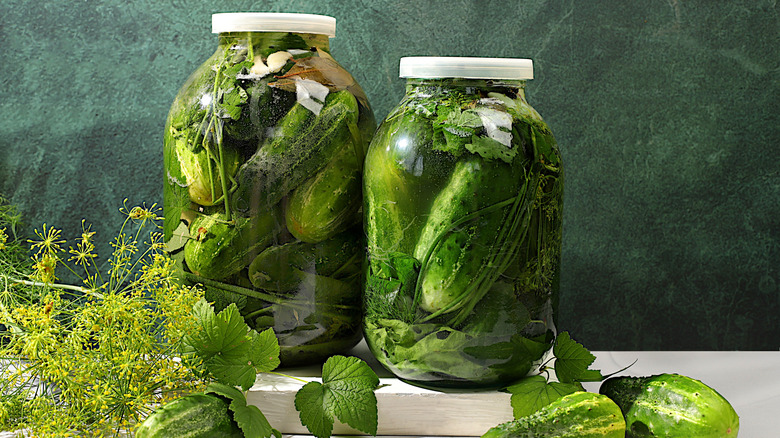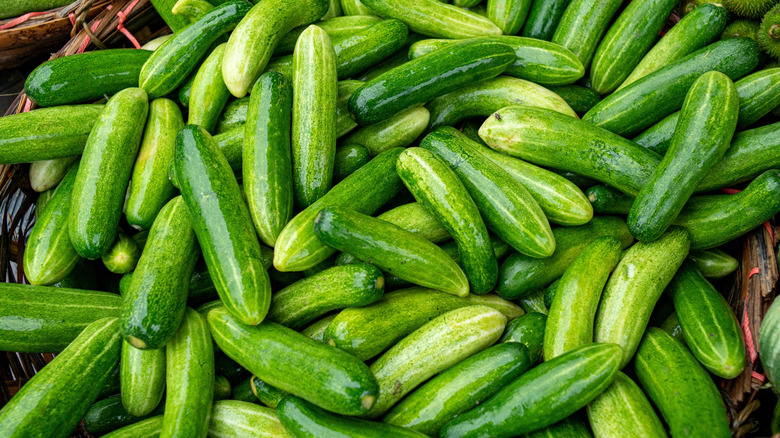Does It Matter Which Kind Of Cucumber You Use For Pickling?
The only thing that tops the crunchy tang from a just-opened jar of good quality store-bought pickles is biting into ones made at home to pickley perfection from fresh cucumbers. Making pickles can be surprisingly easy depending on the method you use. But the first step toward ones so good you may never want store-bought again is choosing the right cucumbers. Angelo Sosa, executive chef of Kembara and Tía Carmen in Phoenix, Arizona, as well as Carmocha and another location of Tía Carmen in Indian Wells, California, spoke to The Takeout about what to look for.
"For me, the Persian cucumbers are best," he told us, naming his favorite. "I like the fact that they are clean in flavor and don't taste too metallic nor earthy and allow the vinegar brine to shine as well as the cucumber," which he said brings "a beautiful personality to your pickles." Explaining why skin thickness is important, Sosa said, "if the skin is too thick, the vinegar brine won't penetrate as well, though too thin and it will overpenetrate." He also added that the cucumbers should ideally be "around 6 to 8 inches" long. Sosa scored Persians high on both counts, saying their "skin to flesh ratio is perfect," and they're "consistent in size" in his preferred range.
Persian cucumbers, which are skinnier than standard supermarket cukes with smooth, thinner skin, have other positive pickling qualities too. They are firm and crisp without many seeds, which makes for snappy pickles. They also aren't watery, which is a good thing according to Sosa: "If there is too much water content it will dilute the vinegar brine preventing the full flavor," he explained.
What other cucumbers make good pickles?
Other good pickling cucumbers have the same key features as the Persian variety: thinner skin, firm flesh that's not watery, and a smaller size ideal for fitting in jars. Probably the most common is Kirbys, which are 3 to 6 inches long with bumpy skin and small seeds. The name Kirby is now used to refer to all cucumbers for pickling. However, there are cucumbers that were developed specifically to make pickles called, naturally, pickling cucumbers. English cucumbers are another option. They're very similar to Persians with most of the same attributes. But these cucumbers that you often see wrapped in plastic are longer, up to around 12 inches, which is large for pickles.
Farmers markets are a good place to explore cucumber varieties to pickle, and chef Angelo Sosa suggests looking locally. "What grows around you is also relevant," he said. But after laying out his argument for Persian cucumbers, Sosa also had a more expansive take: "Pickle what you fancy and love, and can afford."
There is one particular cucumber, however, that you should give a pickling pass. Garden (or slicing) cucumbers, the ones in every grocery store, have several strikes against them. They are big, have a thick skin that can be bitter, have many large seeds in their watery center, and are often waxed. Whichever cucumbers you choose, store them in the refrigerator until they're pickled, as cukes are one of the foods you should never freeze. Then make sure to use a simple trick to prevent flavorless homemade pickles – just puncture the skin first.

